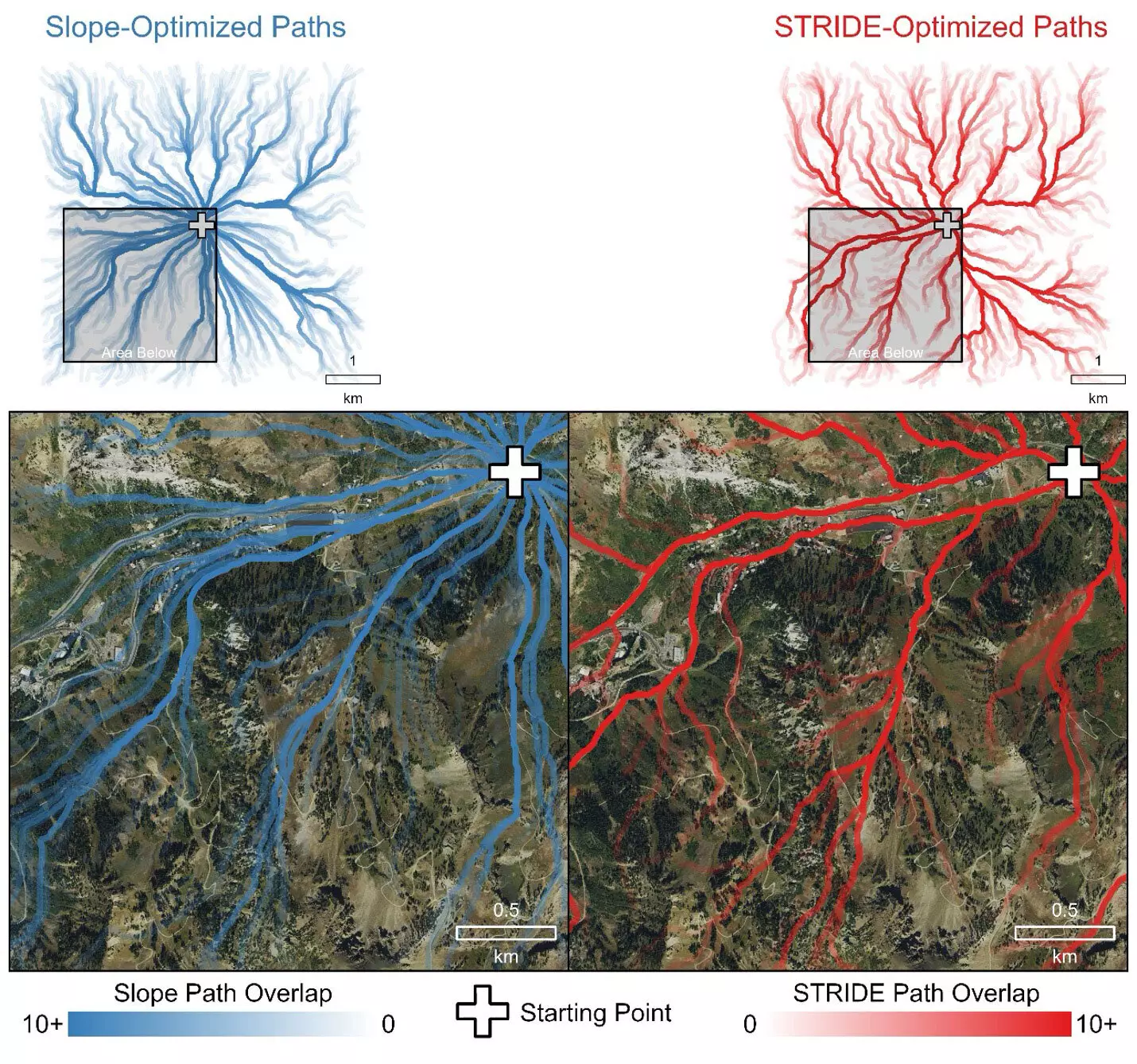As wildfires rage with unpredictable ferocity, firefighters grapple with the pressing challenge of evacuation. When engulfing flames breach fire lines, the urgency for escape becomes paramount, and the chosen routes must be both quick and safe. Historically, firefighting crews have relied heavily on intuition and long-standing experience, mapping their escape routes based on rough terrain characteristics and personal knowledge. Yet, this traditional approach has often overlooked critical variables that affect mobility, leading to potentially life-threatening underestimations of travel times.
The reliance on simple topographical variables has left firefighters vulnerable. Conventional models typically focus solely on the incline of the terrain when estimating traversal time, creating a misleading picture. While steep roads may facilitate quicker travel compared to traversing uneven ground or dense vegetation, existing tools fail to accurately represent this complexity. The need for a sophisticated model that accurately incorporates all facets of a landscape’s structure has never been more apparent.
Introducing STRIDE: A Milestone in Travel Time Prediction
A breakthrough has emerged from the University of Utah in the form of the Simulating Travel Rates in Diverse Environments (STRIDE) model. This innovative approach integrates multiple terrain characteristics—ground roughness, vegetation density, and slope steeper—transforming the way emergency responders evaluate potential escape routes. Lead researcher Mickey Campbell emphasizes the significance of understanding mobility in emergency situations, noting, “If I’m in the middle of the woods and need to get out of here, what is the best way to go and how long will it take me?”
Unlike prior models that had limited predictive capabilities, STRIDE leverages detailed airborne LiDAR data, which paints an intricate picture of the environment from above. This data comprehensively maps the elevation and surface features, such as shrubs, rocks, and variations in ground characteristics, with remarkable precision. By harmonizing this data with real-world field trials, STRIDE is able to simulate and suggest the most efficient routes for human travel across varied landscapes.
The implications of STRIDE are profound, not just for wildland firefighters but also for a multitude of professionals including disaster responders and outdoor recreation planners. The model consistently selects evacuation routes following logical paths, such as roads and trails, rather than directing users through challenging terrains filled with obstacles—a practice noted for its potential hazards.
In comparative trials, STRIDE showcased its superior ability to predict travel times over traditional slope-only models, which often grossly underestimated how long it would actually take to navigate treacherous landscapes. In contrast, STRIDE’s insights have the potential to save lives in emergency scenarios. For instance, in referencing past tragedies like the Yarnell Hill fire, Campbell highlights the critical need for enhanced safety measures.
The development of STRIDE required an extensive analysis of LiDAR data, along with field trials that gathered vital travel time information from diverse walking conditions. Researchers meticulously tracked numerous volunteers navigating varied terrains, allowing them to factor in the nuances of human mobility in their calculations. The project, which began as experimental research back in 2016, has since expanded its scope and efficacy, culminating in its publication in the journal Scientific Reports in September 2024.
The empirical foundation of STRIDE derived from comprehensive field tests in diverse locations—from densely wooded areas in the Wasatch Mountains to urban settings in Salt Lake City—ensured that the model represents a true cross-section of travel scenarios. The merging of technology and natural observation has yielded an accurate tool that offers actionable insights.
The STRIDE model is not confined to academic study; it has been made publicly accessible for practitioners, ensuring that those involved in emergency operations and outdoor activities can utilize it to enhance their safety and efficiency. Its versatility allows for updates to critical frameworks like the U.S. Forest Service Ground Evacuation Time layer, modeling travel times to healthcare facilities, ultimately supporting rapid response in emergencies.
The practical applications of this research are numerous and high-stakes. By prioritizing a comprehensive view of terrain, STRIDE equips firefighters and resilience-focused professionals with the tools to make informed, life-saving decisions. As this model continues to evolve, it holds the promise of shaping safety protocols in emergency management, actively redefining how we approach disaster response and mobility in the face of wildfires.


Leave a Reply